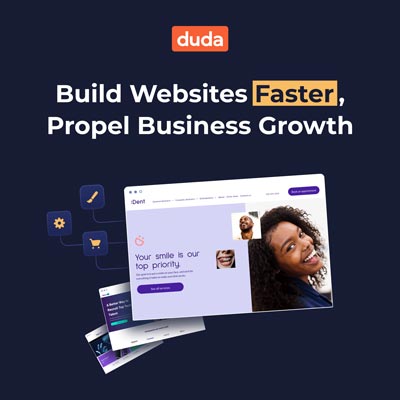It’s clear, B2B lead generation is becoming increasingly more difficult as the years go by. More competition is arriving online, ranging from small business owners all the way to large corporate companies, and they’re coming up with unique ways to capture leads.
Lead generation is the goal of many marketing strategies, and to become successful in this, you need to target your ideal customer at the right moment. Whether this is through content marketing (SEO), paid advertising (PPC) or email marketing, the marketing angle must be flawless and prompted at the perfect moment.
Being industry experts for some time now, we’ve seen lead generation strategies come and go over the years. To get you motivated and on the path to success, we’ve created an extensive list of the best B2B lead generation strategies that you need to try in 2024.
If you want 2024 to be your year, you need to examine the below and start implementing them in your marketing strategy.

What is B2B lead generation?
Business to business (B2B) lead generation is the act of recognizing an interest of a specific customer. At the start of every marketing plan, there’s a target audience. In this case, the target audience will be business-related customers.
Through this marketing strategy, you’ll want to find potential customers (businesses) that may have an interest in the product or service your company offers.
You’ll need to initiate interest on a landing page and capture important information such as their email, telephone number, name, etc., and feed them through onto your sales funnel, where you’ll turn the lead into a conversion.
B2B companies can consider “leads” based on two different types of criteria. These are typically marketing qualified leads (MQL) or sales qualified leads (SQL). Here’s what they mean:
Marketing qualified lead (MQL) – This type of lead depends on the overall prospect that the marketing team has determined “potential, but not ready to buy”. It means the B2B customer has shown a particular interest in your business’s products or services, but they’re not quite ready to make a purchase.
The MQL is typically handed over to a team or individual who’ll monitor the customers’ journey and try to engage them that little bit more with relevant information to turn them into a SQL.
Sales qualified lead (SQL) – Now, an SQL lead is where it starts to get interesting. After careful analyses, the marketing team would have gathered enough data about this customer to understand how interested they are in your business. When a customer is pushed into this bracket, it means they’re ready for the direct sale.
The whole concept of lead generation can seem complicated and time-consuming to any novice, but the idea itself is elementary. To start generating leads, you’ll need a few requirements.
- Website or Landing page that is compelling and offers the product or service you want to sell.
- A persuasive call to action to encourage the user to pass on their contact information.
- Lastly, a plan to turn these leads into converting customers.
It sounds relatively easy when you put it like that, as the process can be broken down in just a few steps. However, each requires careful and detailed planning to execute correctly. For tips on how to perform this lucrative marketing strategy, read on to discover the best lead generation practices in 2024.
Why is B2B lead generation important?
Lead generation is the bread and butter of a business. Failing to achieve this successfully will result in your business struggling for sales, ultimately reducing the chances of expansion.
It’s a must for a company to have a flawless lead generation strategy, so they’re able to gravitate new and targeted customers towards them.
Many businesses depend heavily on lead generation for many reasons. It’s an easy model to get customers to your website, collect their data and then act accordingly with it.
With the likes of Google and various social media platforms, connecting yourself with customers has never been easier. Instead of restricting your business to a specific location, you’re able to expand nationwide or even globally. The possibilities are truly endless.
By getting your ideal customer over to your website, you’re able to sell them your product or services on there. The whole idea of lead generation is that they’ll opt-in for something to gain additional information.
When the consumer opts in, you gain access to their contact details, so you’re able to remarket to them. Once you can capture this type of information, the likelihood of the user converting is increased by 70% when they’re re-targeted.
Having this information can massively help both marketing and sales departments within a business as they’ll build closer relationships with customers that show a much larger interest. By doing this, you can ensure that your efforts are only focused on MQL customers to turn them into SQLs.
How to Generate Leads for B2B
Now for the moment, you’ve all been waiting for how to generate leads for B2B. This list could be 100,000 words long as the list of potential lead gen opportunities is enormous in today’s online world.
However, we’ve managed to narrow this down into a much more manageable selection which you can start implementing in your business today.
1. Content Marketing (SEO)
This marketing plan has been around since the beginning of search engines and, still to this day, can be a rather powerful strategy if you execute it correctly. If you have a particular interest in creating content such as articles, videos, how-to guides, and so on, this might be a perfect way for your business to generate B2B leads.
To make this effective, you’ll need to construct keyword research and create content that’ll rank for specific phrases that your target audience is searching for.
The great thing about content marketing through SEO is that it doesn’t feel like marketing. At the end of the day, the potential customer has searched a query in Google and expects to find helpful content to answer that specific search.
You can then provide them with that information and try to capture them through various lead practices, such as an email sign-up, a free downloadable gift with extra information to exchange personal details, etc.
Ranking on search engines can truly be one of the best marketing tools available on the internet today. Most of the time, once you’ve secured a top-ranking position, you can expect to stay up there for a relatively long time and if not forever.
However, because SEO is such a robust marketing plan, there are many competitors, and if your website is new, you’ll find that fighting for position one in the rankings will be rather tricky.
2. Pay Per Click (PPC) Advertising
Creating content for search purposes can take a long time to optimize and achieve the rankings you desire, and if you’re someone who wants to attain results fast, it probably isn’t a strategy you’ll like to use. To counteract that, you can choose a pay-per-click lead generation method.
This type of method can be highly profitable but also rather expensive. Rightly so, it costs money to advertise to a specific audience, and depending on your niche; these prices can rapidly increase per click.
As shown here, Google’s cost per click (CPC) in popular industries ranges from $1.16 all the way to $6.75 per click.
However, there are multiple ways in which you can incorporate your business into a PPC marketing system. Below are three of the leading PPC opportunities you can invest in to generate high-quality leads.
Search Engines
Search engines like Google, Bing, or Yahoo will allow you to pay via the PPC system to advertise your website under specific keywords related to your niche. For example, instead of creating an SEO page related to “Digital Marketing”, you’re able to pay your way to the top.
It has its pros and cons, and a lot of testing has to be conducted to ensure your campaign is profitable. But if you’re able to achieve a good return on investment (ROI) on this type of advertising, you’ll see significant profits for your business.
Display Ads
If you’re worried about your industry’s prices within a search engine’s PPC system, a cheaper alternative is display ads.
Let’s take Google, for example. Google promotes ads on various websites through AdSense, and the website owners can get paid to advertise these banners on their site.
These banners could be promoting your business at a much more affordable rate. To put this into perspective, on Search Engines, CPCs can range anywhere from $1.16 – $6.75 per click. Whereas, with display ads, you can expect to see something around $0.47 – $1.49, depending on your niche.
This makes for much more affordable advertising, but the only downside is that the leads generated from display ads are much lower quality.
Remarketing
Something you can do on either search or display ads is that you’re able to remarket to customers that have already shown an interest in your ad and website. This massively increases the chances of them converting the second time around.
In simple terms, remarketing is simply a reminder to a consumer. By manipulating this feature on both search and display ads can be rather profitable if you do it right, and it should definitely be implemented into your lead generation strategy.
3. Email Marketing
Another lead generation strategy you should be thinking about is email marketing. It’s a great tool to include within your marketing efforts, and the best thing about this strategy is that you can automate it relatively quickly.
Automation is something we should all be working towards. With the right email strategy, you’re able to generate remarkable leads at a great price.
Because it’s automated with cheap software like Mailchimp, it’ll dramatically reduce staffing costs, increase reachability, and you’ll also gain access to many reports that can benefit your campaigns greatly.
By using email marketing, you’re able to pick up on potentially lost leads. For example, you may want to re-target a potential customer through email who reached your checkout page. This will remind them that they were interested in your product and should return to complete the purchase.
4. Create Free Online Tools
Something that can be an outstanding investment is creating a free online tool. A great example of this is Ubersuggest. Website owners can use this tool to generate a completely free SEO analytics report.
This type of report can be massively beneficial for the website owner, and if they want to gather more insights about their website, they’ll have to pay for a membership.
This type of lead generation is unique and may require a heavy investment before seeing any initial results. By offering a tool like this, you’re able to gain free exposure if consumers recommend using your tool, and it’ll give them a “try before they buy” feeling.
After all, how much more inclined would you feel about buying a product or service that you have already trialed for entirely free with no questions asked?
5. Answer Questions on Quora
Ever felt like there’s a bunch of unanswered questions about your industry? Why not answer them on the most famous question and answer website in existence, Quora?
Many marketing specialists massively overlook this website, but it can tremendously increase your potential leads.
Quora is a website where the public asks questions and users answer them for those who don’t know. It’s a simple concept, but it works.
Take a look at this answer. In 2015, a Quora user under the name of David S. Rose answered this question “Why are there crushed stones alongside rail tracks“. After answering this question, Dave received a whopping 1.5 million views for entirely free.
Now, if you were to passively hide some relatable links about your business within your answers and provide helpfulness to a user, you could gain access to a whole world of new and exciting leads.
6. Optimize Everything
Lastly, without optimizing your marketing strategy, you’ll struggle to maximize the potential profits of your marketing efforts. The game aims to spend the least amount of money and earn the most profit (ROI). To be successful at this, optimization has to take place.
Here are some examples of optimization:
Landing page – Let’s say your landing page has a 3% conversion rate. Your job will be to create an A/B split test and turn that 3% conversion rate into something much more. Here you’ll create two landing pages, let’s say one with an explainer video and the other with pictures and text. After sending an equal amount of traffic to both web pages, you’ll then see which performs better and so forth.
Email marketing – The same concept goes for email marketing. To create the best possible copy for your marketing efforts, you’ll need to perform an A/B split test. By executing this correctly, you’ll find an email marketing copy that your audience reacts better with.
If you’re serious about generating more B2B leads, then optimizing your marketing strategies is the key to success. From each test you perform, you may not see an increase, but you’ll need to keep introducing changes until you can increase your potential conversion rate.
Here you’ll be able to gather data about how your audience reacts to specific marketing techniques, and you can file these for a lifetime.
Conclusion
Generating B2B leads can seem daunting at first, but it can be executed easily with the right mindset and plan. By using either of the techniques above, my biggest tip to anyone is to monitor the process.
Write down exactly what you’re doing, how you’re constructing the marketing content and so forth. By doing this, you’re able to gain data about what’s working or not, which can be beneficial in the future.
Don’t get me wrong. They’re still a boatload of different B2B lead generation strategies out there. But coming into 2024, these are possibly the best options you have.
Time and time again, they’ve proven themselves to be remarkable lead generation methods and will continue to do so in the future.


